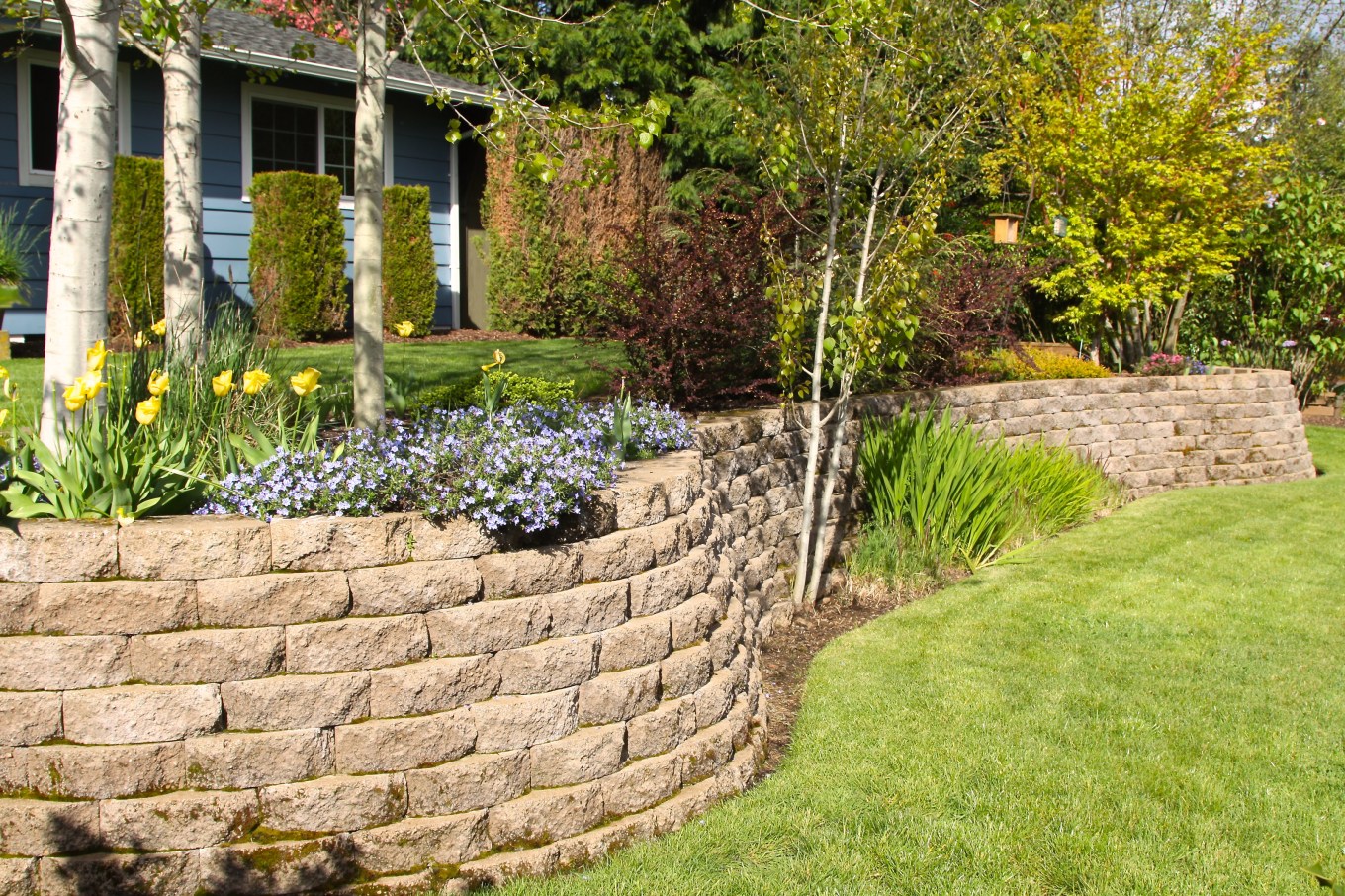If your backyard or garden is having a problem with erosion or unstable soil, your solution could be a retaining wall. It can play a key role in yard and garden function, design, and safety.
Learn some tips and tricks for installing a retaining wall and deciding whether to DIY or hire a pro.
Tips Before You Build Your Retaining Wall
Before you get started on your retaining wall, consider these tips:
- Carefully select your materials: You can construct retaining walls from several different materials, such as wood, stone, or concrete. Select the one that works best with your garden design. Also, check if you’ll need an adhesive for your material. Some wall bricks are interlocking; others need masonry cement.
- Add drainage to your wall: Fill the back of your retaining wall with gravel or sand. This will prevent wet soil from building up when it rains. You may need to add a drainage pipe if rainfall is heavy and frequent enough.
- Wait for dry soil: You don’t want to build your wall on wet soil because the soil can expand and give you inappropriate dimensions.
Once you’ve carefully planned your wall, you’re ready to get the materials.
Buy the Right Materials and Tools
The list of materials for your wall is (relatively) short, but should include:
- Concrete, stone, or wood blocks: One of these block material types will be the primary one you use to build your wall. Make sure you measure the blocks and buy enough of them.
- Adhesive: In case the block material you’ve chosen requires an adhesive, have one ready before you lay your tiles.
- A shovel: You’ll need to dig the trench for the first course of your wall.
- A tape measure: This will help you properly mark the length and width of your wall.
- Gravel: Gravel will lay at the base of your retaining wall. It can also be added as a drainable material to the back of the wall.
- A circular saw with a masonry blade: Have a saw on hand to cut blocks as needed.
- Capstone blocks: Buy some of these to add the final touch to your wall.
- A drainpipe: To prevent the soil from expanding and damaging your wall, a drainpipe will route water and avoid wall collapse during rainy seasons.
You may need more tools or different materials depending on the details of your project. If you’re lost, don’t be afraid to hire a contractor or ask an expert.
Estimating Cost for Building a Retaining Wall
Several factors will affect the cost of building a retaining wall, including:
- Materials: You might pay up to $100 per square foot of your wall for a material like stone or $150 for steel. But brick could cost as little as $20 to $25 per square foot. Costs include labor.
- The dimensions of the wall: The size of your wall will of course factor into how much building and drainage material you’ll need.
- The type of retaining wall: There are a few ways to build a retaining wall, such as with anchoring, cantilevering, or rammed earth. The cost of each type varies.
- Drainage materials: Any retaining wall needs to be designed with drainage, whether gravel and weep holes, drainage pipes, or criblock, built of reinforced concrete and other materials compacted for enhanced stability. Drainage material costs $60 to $70 per linear foot.
- Cost: Building a retaining wall will cost $3,500 to $10,000 — going as low as $1,239 and as high as $12,029 depending on materials and size. Generally, contractors will quote a price that includes labor.
Measure and Mark the Location for the Retaining Wall Blocks
When you’re measuring the size and location of your wall, use a tape measure and mark the proper length and width. Next, place garden stakes at the four corners of your wall and tie them together with mason’s string. Remember to mark any place where the wall might bend or curve.
Taking these measurements properly and precisely is essential to buying the correct amount of materials and digging the proper foundation.
Retaining Wall Repair and Installation: DIY vs. Contractors
Your decision about whether to build your retaining wall yourself or hire a contractor should consider factors such as:
- Experience: Have you attempted any DIY exterior home projects before? Retaining wall installation isn’t the easiest project for beginners. Some situations may even require professional engineering to ensure the wall keeps its shape. Generally, if you’re planning a retaining wall taller than four feet, it’s time to call in a pro.
- Permits: Due to drainage concerns, building some retaining walls requires a permit. If you need one, a contractor can help you more easily manage the paperwork. Contractors can also assume some liability for the final project.
- Scale: The bigger and more complicated your retaining wall, the more time and effort you’ll save by outsourcing the labor to a contractor.
If you’re having trouble finding a contractor, your local real estate agent can provide you with a list of references for well-qualified installers.
